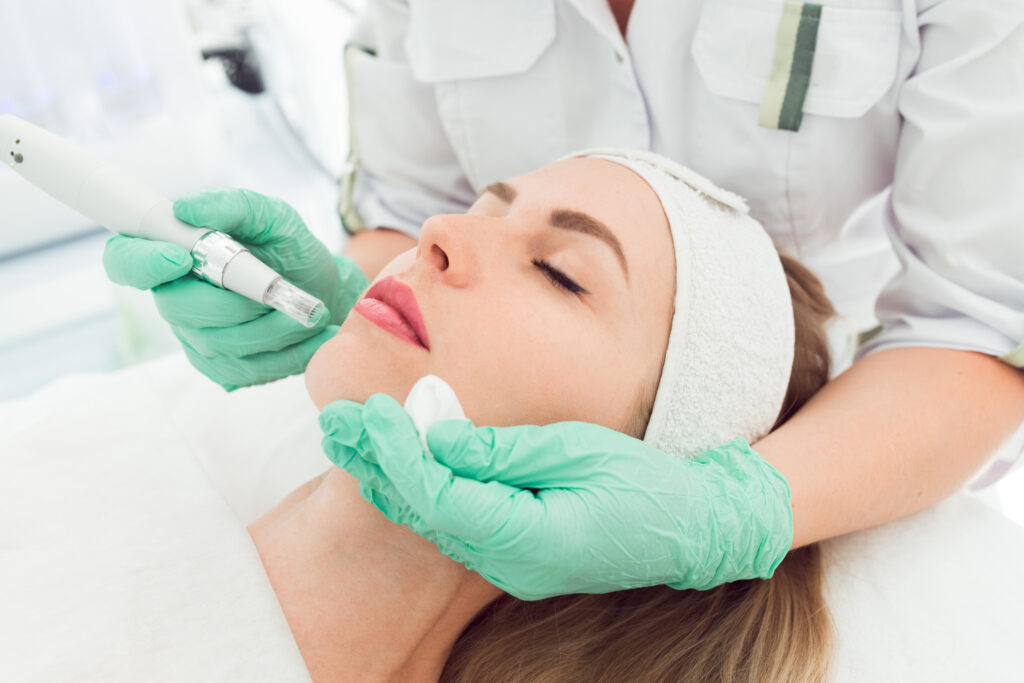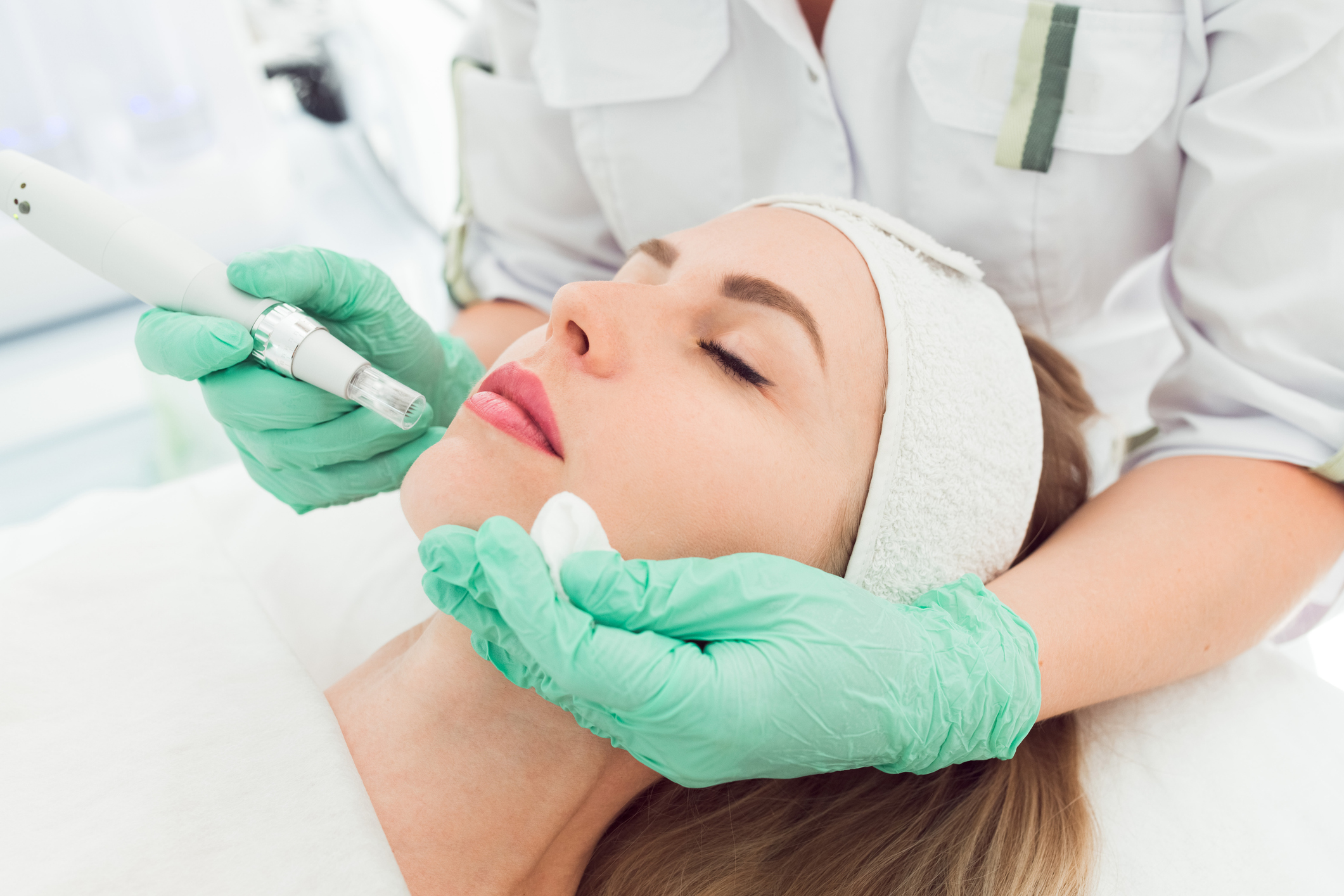
PRP microneedling has become one of the most popular skin rejuvenation treatments in recent years, thanks to its ability to improve skin texture, tone, and overall appearance. This cutting-edge treatment combines the benefits of microneedling with platelet-rich plasma (PRP) to promote collagen production, reduce fine lines, and improve the skin’s natural healing process. As people continue to seek minimally invasive treatments for smoother, younger-looking skin, PRP microneedling stands out as a top choice for enhancing both the face and body.
In this blog, we will explore what PRP microneedling is, how it works, and the impressive benefits it offers. If you’re looking for a natural yet effective way to rejuvenate your skin, PRP microneedling might be the ideal solution for you.
What is PRP Microneedling?
PRP microneedling is a two-step skin treatment that involves microneedling (also known as collagen induction therapy) and the application of platelet-rich plasma. Microneedling uses a device equipped with tiny needles that create micro-injuries on the skin’s surface. These micro-injuries trigger the body’s natural healing response, prompting the production of collagen and elastin, which are key to youthful and firm skin.
The addition of platelet-rich plasma (PRP) elevates the treatment to the next level. PRP is derived from the patient’s own blood, which is processed to separate the plasma rich in growth factors. When applied to the skin, PRP accelerates healing, stimulates tissue regeneration, and boosts the effects of microneedling by enhancing collagen production. This combination results in smoother, tighter, and more radiant skin.
How PRP Microneedling Works
The PRP microneedling process involves the following steps:
1. Blood Draw for PRP
The procedure begins with drawing a small amount of the patient’s blood. This blood is then placed in a centrifuge, where it is spun to separate the platelet-rich plasma from the rest of the blood components.
2. Microneedling Treatment
Once the PRP is prepared, the microneedling process begins. A device with fine needles is rolled over the skin, creating controlled micro-injuries. These micro-injuries trigger the skin’s natural healing process, which leads to the production of new collagen and elastin. The depth of the needles can be adjusted to target specific concerns such as fine lines, acne scars, or uneven skin tone.
3. Application of PRP
After microneedling, the platelet-rich plasma is applied to the treated skin. PRP is packed with growth factors and nutrients that enhance the skin’s healing process and stimulate further collagen production. The PRP penetrates the micro-channels created by the microneedling, delivering the nutrients deep into the skin for maximum rejuvenation.
4. Post-Treatment Care
Patients are typically advised to follow a specific post-treatment skincare routine to maximize results and ensure proper healing. Mild redness and sensitivity may occur, but these effects usually subside within a few days.
The Benefits of PRP Microneedling
PRP microneedling offers a range of impressive benefits for those looking to improve the overall health and appearance of their skin. Here are some of the top reasons why this treatment has gained popularity:
1. Improves Skin Texture and Tone
PRP microneedling effectively addresses common skin concerns such as uneven texture, rough patches, and pigmentation issues. The treatment encourages cell turnover and collagen production, leading to smoother, more even skin. It is also effective for minimizing the appearance of acne scars, stretch marks, and other textural irregularities.
2. Reduces Fine Lines and Wrinkles
As we age, collagen production decreases, leading to the development of fine lines and wrinkles. PRP microneedling stimulates the production of new collagen and elastin, which helps to plump the skin, reducing the appearance of fine lines and wrinkles. Over time, this leads to a firmer, more youthful complexion.
3. Promotes Natural Healing
One of the key advantages of PRP microneedling is that it utilizes the body’s own healing mechanisms. The platelet-rich plasma derived from your blood contains growth factors that enhance tissue repair and regeneration. This natural healing process helps to improve skin tone, reduce inflammation, and promote overall skin health without the need for synthetic products or chemicals.
4. Minimally Invasive with Minimal Downtime
Unlike more invasive skin treatments such as laser resurfacing or surgery, PRP microneedling is minimally invasive. Patients typically experience only mild redness and sensitivity after the treatment, with minimal to no downtime. Most individuals can return to their normal activities within 24 to 48 hours.
5. Customizable for Various Skin Concerns
One of the greatest advantages of PRP microneedling is its versatility. The depth of the microneedling device can be adjusted based on the patient’s specific needs, making it suitable for treating a wide range of concerns, from fine lines to deeper acne scars. PRP can also be used in conjunction with other treatments, such as laser therapy or chemical peels, to further enhance results.
6. Long-Lasting Results
While PRP microneedling typically requires multiple sessions for optimal results, the effects of the treatment are long-lasting. Patients often notice improvements in skin texture, firmness, and overall radiance within a few weeks of the procedure, with continued improvement over the following months as collagen production increases.
Who is a Good Candidate for PRP Microneedling?
PRP microneedling is suitable for a wide range of skin types and concerns. Ideal candidates for this treatment are those looking to:
- Improve skin texture and tone.
- Minimize the appearance of fine lines, wrinkles, and acne scars.
- Enhance skin radiance and overall complexion.
- Reduce pore size and improve firmness.
Individuals with certain skin conditions, such as active acne or rosacea, may need to consult with a dermatologist before undergoing PRP microneedling. Additionally, patients with bleeding disorders or those taking blood-thinning medications may not be suitable candidates for PRP treatments.
PRP Microneedling for Acne Scars
Acne scars are one of the most challenging skin concerns to treat, but PRP microneedling has shown remarkable results in reducing their appearance. The combination of microneedling’s collagen-stimulating effects and PRP’s growth factors helps to smooth out the skin and diminish the depth and visibility of acne scars. After a series of treatments, many patients notice a significant reduction in scarring and an improvement in skin texture.
Recovery and Aftercare
Following a PRP microneedling treatment, patients can expect some mild redness, similar to a sunburn, as well as minor swelling. These side effects typically subside within 24 to 48 hours. It is essential to follow the post-treatment care instructions provided by your practitioner to promote healing and protect the skin.
Patients should avoid direct sun exposure, wear sunscreen, and refrain from using harsh skincare products for at least a week after treatment. Hydration and moisturizing are also crucial for maintaining the skin’s moisture barrier and optimizing results.
–
PRP microneedling is a powerful skin rejuvenation treatment that offers a natural and effective way to improve skin texture, reduce fine lines, and minimize acne scars. By combining the collagen-inducing benefits of microneedling with the healing properties of platelet-rich plasma, this treatment provides long-lasting results with minimal downtime. Whether you’re looking to address specific skin concerns or simply want to enhance your complexion, PRP microneedling is a versatile solution that can help you achieve glowing, youthful skin.
If you’re interested in PRP microneedling, consult with a qualified skincare professional to determine if this treatment is right for you. With regular sessions and proper aftercare, you can enjoy a smoother, more radiant complexion that lasts for months to come.








